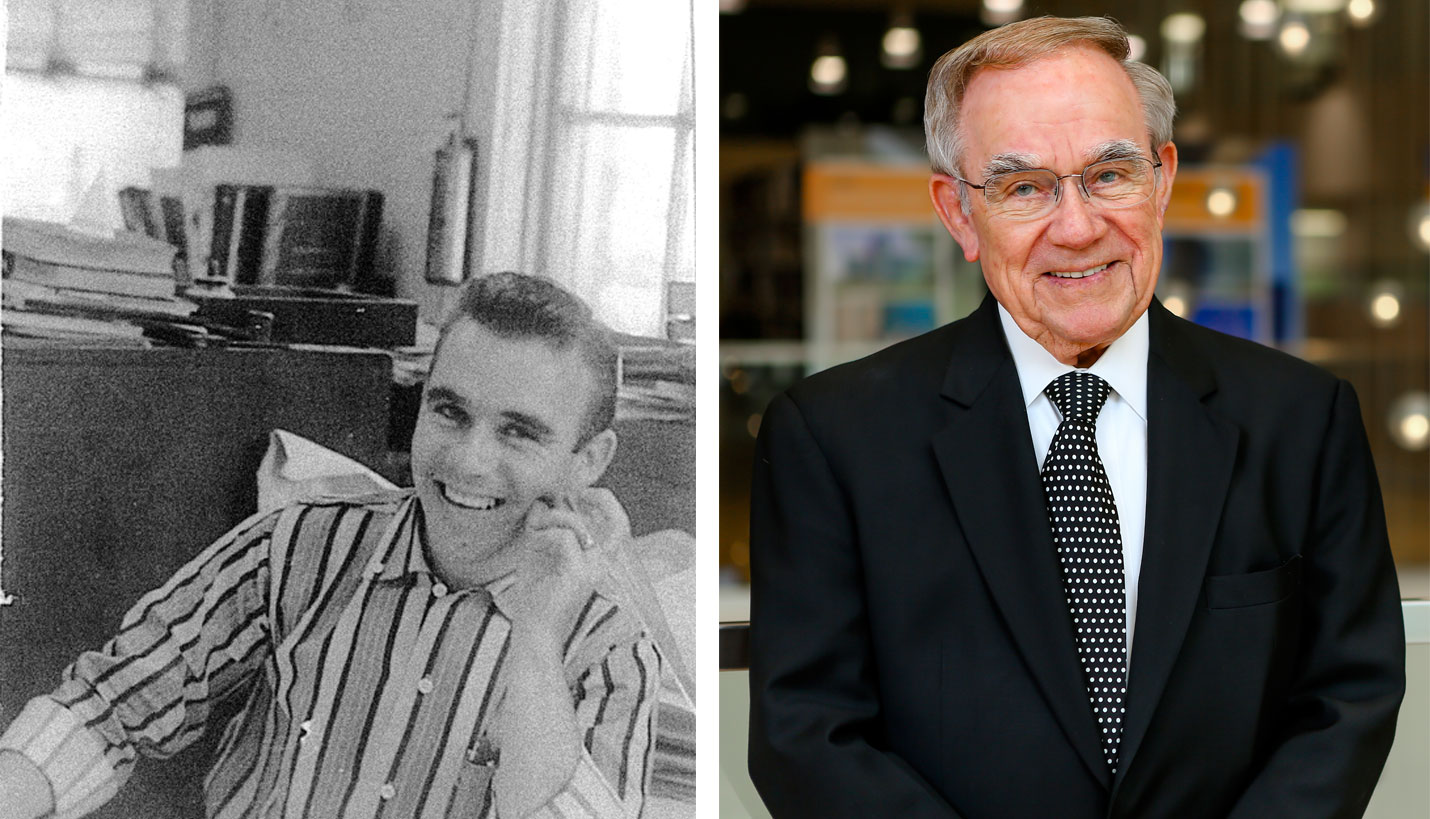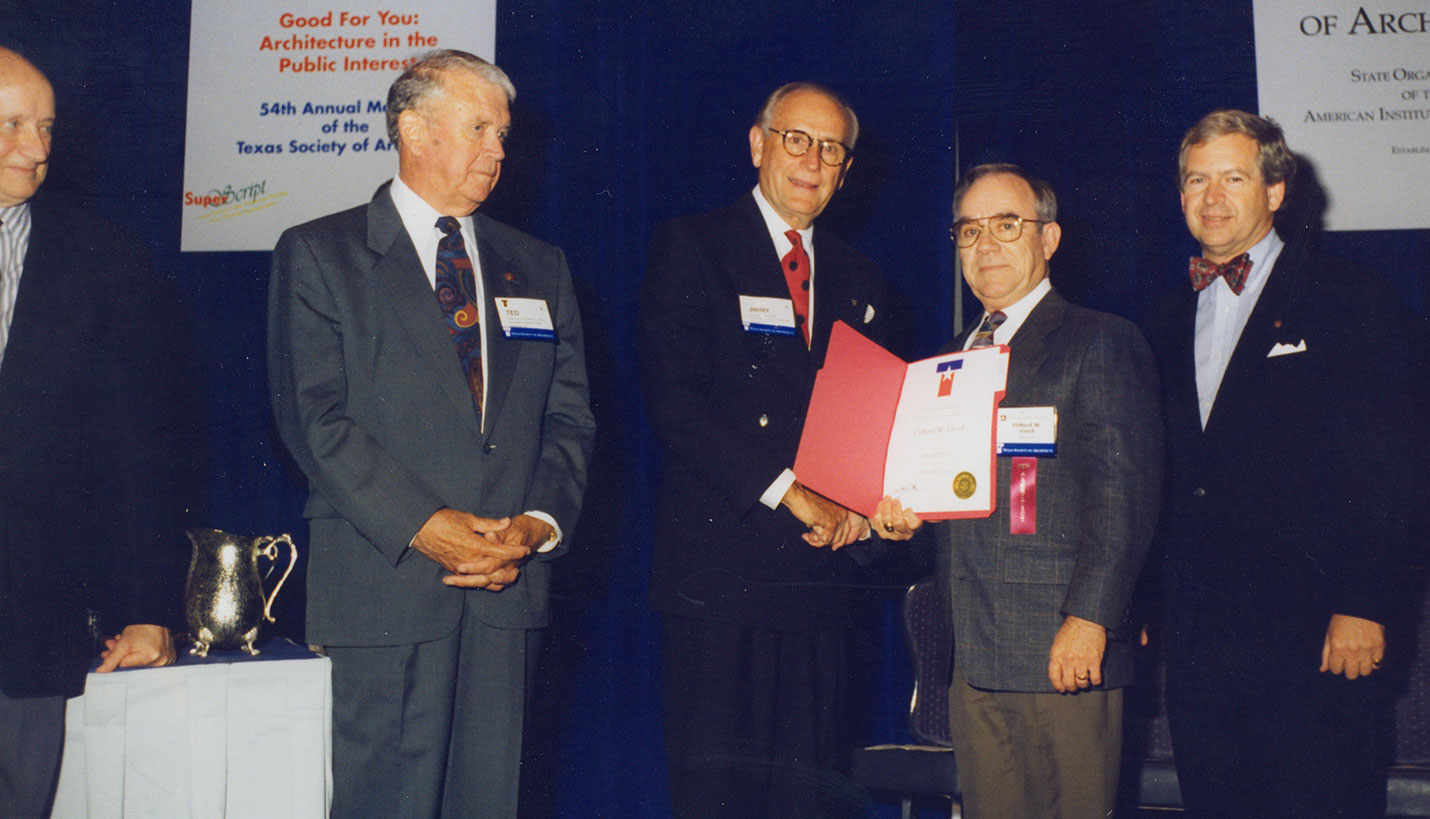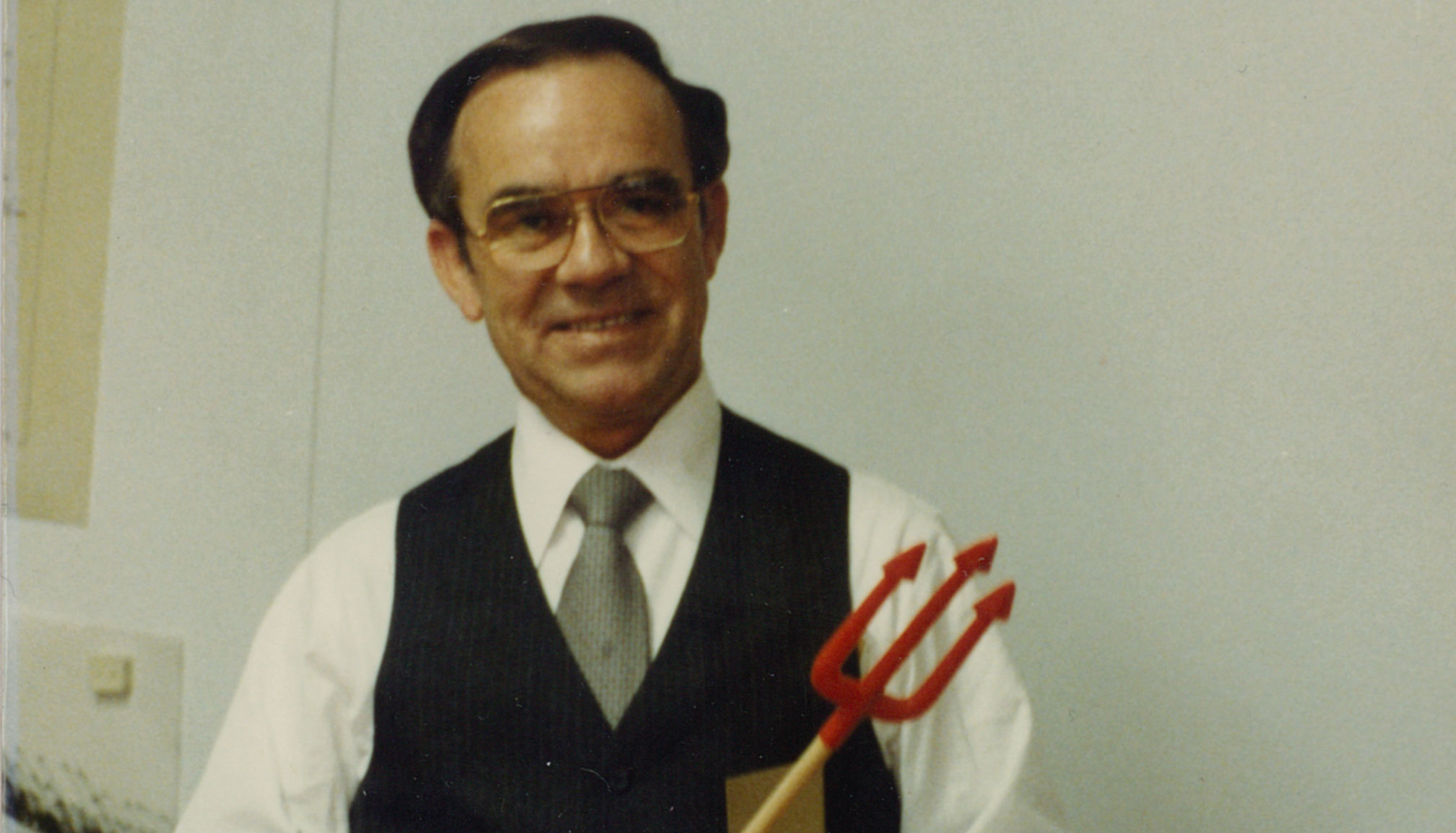Cliff Lloyd - From 'Office Boy' to Architect
We at Page are very saddened to lose someone who was integral to our firm and a significant part of Page's history. Cliff Lloyd, born October 31, 1937 and passed February 7, 2018, served multiple generations of leadership and was General Manager at the time of his death. Cliff led a remarkable and full life, which is detailed below in a story originally published in 2015 in honor of his 60-year work anniversary at Page.
He was eulogized by colleagues with remarks such as, “Cliff had a large family but he had even a larger family called Page… [He] was a rock, always there, always ready, whatever needed to be done on behalf of Page.” – Mattia Flabiano, AIA, Page Senior Principal and “I admired Cliff for many things—his knowledge of what it means to be a total, complete architect; his devotion to family and the pride he took in it; and his sense of integrity as a gentleman, to name the top three things.” – James M. Wright, FAIA, Page Senior Principal.
When Cliff Lloyd began his career with Page in Dallas in January 1975, Louis Page, Louis Southerland and George Page, the second generation of Page principals who were born in the early 1900s, were still alive and active with the firm. The Houston office had been in existence for only two years. And the openings of the Washington DC, Denver and San Francisco offices were still a good 20, 34 and 39 years, respectively, in the future!
The Dallas office was created in 1975 when the practice of Dallas architect Roscoe P. DeWitt was acquired by (then) Page Southerland Page. By that time Cliff had 19 years of experience, having begun his career at age 18 when he joined DeWitt’s firm in 1956. Cliff had previously worked for a small construction firm in Oklahoma after graduating from high school and was impressed with an associated architect who was (naturally) well dressed, sophisticated and smart. Based on this role model, Cliff thought it would be very cool to be an architect.
He began his journey toward this goal when he and his wife Mary Ann moved to Dallas to seek employment. He went to Cloud Employment Agency and as luck would have it, Roscoe DeWitt Architects was looking for an “Office Boy”. Cliff began work there on January 2, 1956.
“I was an office boy, a janitor, whatever needed to be done around the office, I did it,” says Cliff. “I even kept the cooling tower going!” For a couple of years, Cliff also ran the printers and became DeWitt’s chauffeur, driving him to lunch every day at the City Club downtown. But he never gave up on his dream to be an architect.
After a few years working in DeWitt’s office, he expressed his interest in becoming a draftsman to an electrical engineer in the office. Cliff had taken agriculture classes in high school that required drawing, and the engineer taught him more in the evenings after work.
In the early 1960s, one of Cliff’s co-workers accepted a job with new housing developer, Fox and Jacobs Construction Company. He asked Cliff to join him as draftsman for $75 a week, an increase over his current salary of $50. When Cliff told DeWitt about the opportunity, his employer slyly told him that he had been planning to offer Cliff the same position and salary. Cliff stayed with the firm, and DeWitt began supporting Cliff’s desire to become an architect by buying him books to study – the first one being Sir Bannister Fletcher’s A History of Architecture.
DeWitt’s practice, located at 2025 Cedar Springs, included hospitals, government facilities and residences, and he was well known for having taken over the design of Stanley Marcus’s house on Nonesuch Avenue after Marcus fired Frank Lloyd Wright. DeWitt also designed two stores for Neiman Marcus, and one of Cliff’s first projects as a draftsman was working on the renovations of the top two floors of the downtown Neiman Marcus store, which still stands on Main Street across from the Page office.
When Page bought DeWitt’s practice, his former partner, Jim Wright (not to be confused with James Wright, current Senior Principal in our DC office), became the first principal in the Page Dallas office. All of DeWitt’s clients followed Jim Wright and the staff to Page, and the Dallas office experienced significant business growth after the first year. Cliff’s first major project was the Texas Woman’s University School of Nursing on which he worked with Louis Southerland.
Cliff recalls buying a brand new Ford Granada and being so proud to pick up Louis at the airport in his new car. When, to Cliff’s horror, the passenger door would not open, Louis was forced to slide all the way across the front seat to get to his side of the car. Luckily, Louis found this amusing, and Cliff had more opportunities to work with him on projects, including a bank in Orange, Texas. This turned out to be a very lucky project for Cliff when he took his architectural license exam.
At the time, the prerequisites to take the exams to become an architect were to either have a four year architecture degree, or four to eight years experience; this enabled Cliff to pursue his license. Cliff took night courses to prepare for the week-long exam, and he took the design portion of the test shortly after he worked on the bank project with Louis. The project for the day-long test turned out to be a drive-in bank of the exact same scope as the Orange bank. Needless to say, Cliff passed that test the first time!
But it eventually took him 19 years to get his license.
Cliff passed every part of the exam except for the Structural Engineering component. He had never taken algebra or trigonometry in high school, so it was more challenging to solve the problems required to pass the test. In 1993, his son taught him algebra, and Cliff passed the structural exam (the first year it was administered on the computer) - and became a licensed architect almost 40 years after he began his first job in DeWitt’s office. Now, that’s perseverance!
Cliff also recalls his first experience with Louis Southerland’s partner George Page, which was at an interview for Temple Industries. George told Cliff in advance to do most of the talking during the interview for the “nuts and bolts” project as George described it. But, once George introduced the team to the client, he continued to make the presentation without anyone else getting to utter a word.
According to Jim Wright, George was a stickler. As he learned more about Cliff and the valuable roles he played in the Dallas office, from handling day-to-day administrative and financial duties, to being in charge of the construction administration on several large projects at the same time, George asked, “Wow, where can I find someone like that for the Austin office?” There was no one to be found.
These days, Cliff—a former project manager, Executive Vice President and now an Associate Principal—no longer manages projects but works closely with the Senior Principals to ensure their vision and strategy for the firm are implemented. He still handles finances, including projections, for the Dallas office, manages the retirement plan and attends the monthly board meetings as the scribe. He is also very busy being a father, grandfather and great-grandfather to three sons (and their wives), ten grandchildren and seven great-grandchildren!
When asked what inspires him to keep working long after many consider retiring, Cliff responded, “Early in my employment, work became my hobby as well as a means to support my family. As a matter of fact I don’t ever recall awakening in the morning and dreading to go to work. It’s not quite as exciting today as it was when I was deeply involved in projects, but, it’s still a lot of fun!”
And after almost 60 years, that’s pretty special – just like Cliff.
Original publication date: 3/13/2015
02/23/2018
Related Posts
- Becoming an NCARB Exam Writer
- Congratulations to 2019 Newly Licensed Professionals
- Seeing The World Through An Architect's Eyes
- Protecting San Francisco’s Trees
- Congratulations to 2018 Newly Licensed Professionals
- Empowering Your Career Through Storytelling
- Included In Senior Housing Architecture & Design Awards













